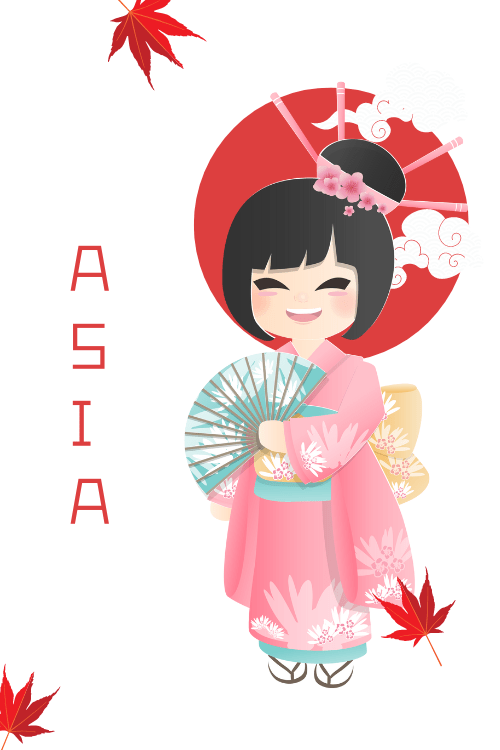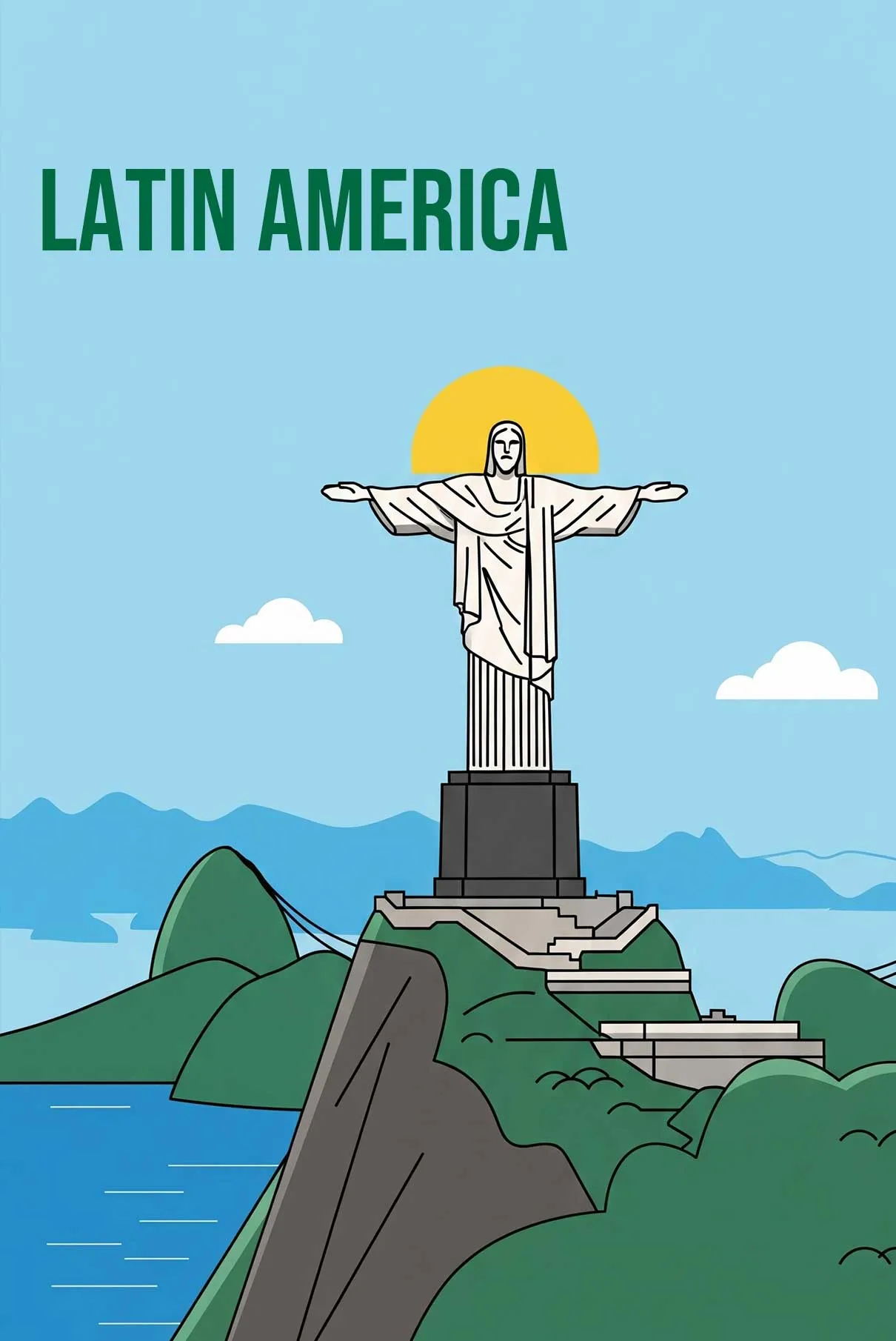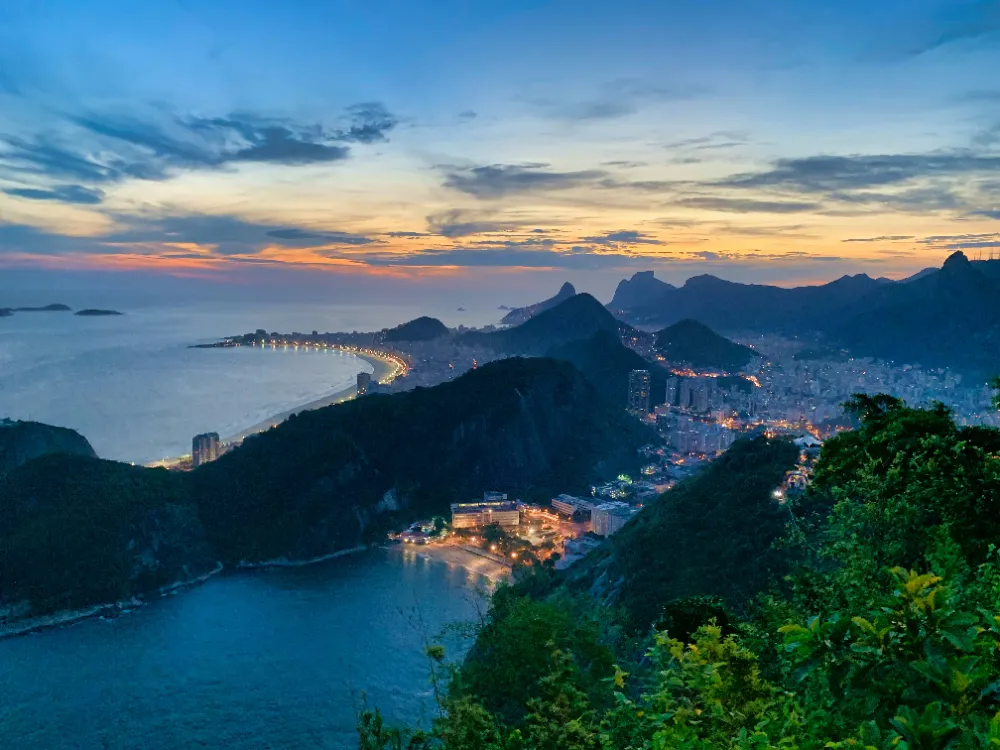eSIM Brazil
Best Time to Visit Rio de Janeiro Updated
Rio de Janeiro earns its nickname, the Marvelous City, for good reason.
Jungle-capped mountains plunge into sandy crescents, music drifts from street bars, and the calendar swings from fireworks to samba.
There’s really no bad time to visit Rio, but there is a best time for you, depending on what you want from the trip.
This guide to Rio de Janeiro breaks the year into clear windows, compares the dry season to wetter months, maps out major events like New Year’s Eve and Carnival, and helps you balance crowds, hotel prices, and weather.
By the end, you’ll know the best months for your priorities, plus how to plan a trip to Brazil that’s smooth, safe, and unforgettable.
Stop Overpaying in Roaming Fees (Or Wasting Time Hunting for Local SIM Cards)
Overseas travel often means choosing between outrageous roaming charges or scrambling for local SIM cards the moment you land.
One drains your budget. The other steals time away from your holiday.
Smart travelers are now switching over to eSIMs.
eSIMs give you data at a fraction of the cost of what your telco charges for roaming and most modern phones have eSIM technology set up – (although you’ll need to check your phone’s compatibility here).
How eSIM4.com Works:
- Step 1: Pick your destination and data plan
- Step 2: Scan our QR code (takes 3 minutes)
- Step 3: Land overseas with instant local network access
No queues. No tiny plastic cards. No bill shock.
Just seamless, affordable data from the moment you land.
Stop letting phone companies raid your travel budget. Join the smart travelers who’ve already switched.
Get Your eSIM NowThe Short Answer
- Best weather: September and October, also April and May. Days are warm enough for the beach, nights are comfortable, and humidity drops.
- Best for Carnival: February or March, depending on the lunar calendar. This five-day festival leading up to Lent is the city’s global calling card.
- Best value: June to August. Cooler temperatures, fewer visitors, lower hotel prices, and still plenty of sun for sightseeing.
- Best for New Year’s Eve: December 31 on Copacabana Beach. Book a year in advance if you want oceanfront rooms.
- Best all-around month: October. Long beach days, calm seas, lighter crowds than summer, and excellent hiking conditions in Tijuca Forest and on Corcovado.
Keep reading for a deep dive by season and month, including how rainfall, crowd levels, and costs shift across the year to visit Rio de Janeiro.
How Rio’s Seasons Work
Rio sits in the Southern Hemisphere, so the seasons flip compared to North America and Europe.
- Summer runs from December to March. High temperatures, higher humidity, big crowds, and higher prices. Afternoon downpours are common, then the sky clears.
- Autumn is March to May. Temps fall back from peak heat, humidity eases, and the city slides into ideal exploring weather.
- Winter is June to August. Cooler and drier, skies often blue, water a bit brisk, and nights can dip into the 60s at night.
- Spring is September to November. Still warm, usually dry, and perfect for enjoying beaches and viewpoints.
Quick climate cues
Daytime highs often sit between 24–32°C (75–90°F) in most months. Summer can spike higher. Winter days hover around 22–26°C (72–79°F) with nights in the 16–20°C range (60s to upper 60s°F). The rainy season runs from December to March with short, heavy downpours. The dry weather window stretches roughly June through October, though brief showers can pop up anytime.
Season-by-Season: What You’ll Actually Experience
December to March, peak summer and Carnival
Weather and sea: Expect high temperatures, strong sun, and humidity. It’s warm enough for long beach days at Copacabana and Ipanema, and the ocean feels fantastic. Afternoon storms come fast, dump rain, then move on. These downpours rarely cancel the entire day.
Crowds and costs: This is high season. Brazilians take summer holidays, international travelers flood into the city, and hotel prices jump. If you want beachfront New Year’s Eve or Carnival, reserve many months ahead, ideally a year in advance for top addresses.
Why come now:
- New Year’s Eve on Copacabana, with fireworks over the bay. You’ll see seas of white outfits, live music, and rituals at the waterline.
- Carnival, usually in February or March. The Sambadrome parades, blocos in every neighborhood, and all-night revelry. Even if you skip parade tickets, the street parties alone make the trip.
- Summer energy. Rio de Janeiro boasts a social rhythm that peaks when the sun blazes. Sunset at Arpoador, live music in Lapa, and late-night caipirinhas feel electric.
Trade-offs: Heat and humidity can sap your energy on steep climbs like the Christ the Redeemer trail or Pedra Bonita. Plan sightseeing early, then swim or nap in the hottest hours. Pack light fabrics, sunscreen, and an umbrella. Accept that hotel prices run high, particularly December to March.
March to May, shoulder sweet spot
Weather: March to May blends warmth with a gradual drop in humidity. You still get beach days, but without the summer crush. Afternoon storms fade as autumn settles in.
Why it’s great:
- Comfortable exploring. Corcovado and Sugarloaf cable car rides are pleasant, and the chance of low clouds blocking views shrinks.
- Cultural life. Concerts, football at Maracanã, and gallery openings continue, and the city exhales after Carnival.
- Value. Prices ease from peak highs, especially outside Easter week.
Best months inside this window: April and May. Skies are steady, seas moderate, and the Tijuca Forest trails feel fresh after summer rains. You can cover more ground in a day without fighting the heat.
June to August, cooler and calmer
Weather: Winter in Rio is mild. Daytime often feels like spring, with cooler evenings. Rainfall drops. Ocean temperatures can feel brisk, but many locals and visitors still swim on sunny days.
Why come now:
- Lower prices and fewer crowds. This is the low season. You’ll find deals, book tables easily, and enjoy smaller lines at attractions like Christ the Redeemer and the Sugarloaf cable car.
- Clear views. Cold fronts can sweep in very clear skies, perfect for panoramic photos.
- Football season. Matches at Maracanã are spirited year-round, but winter nights feel tailor-made for stadium energy.
Trade-offs: You may not log endless “perfect beach” days. Water temps cool, and a few days can be cloudy. If your dream is long, lazy swims, you’ll prefer November to March. If you want uncrowded museums, hikes, and neighborhood wandering, winter is a smart time of year to visit.
September to November, the golden return to summer
Weather: Spring brings rising warmth and mostly dry weather. September and October are widely loved by repeat visitors. By November, the city starts to feel summery again without peak-season chaos.
Why it’s great:
- Balanced conditions. Warm enough for the beach, not so hot that hikes feel punishing.
- Outdoor adventures. Hang-gliding from Pedra Bonita, hiking Pico da Tijuca, and mountain-to-sea views from Vista Chinesa.
- Stable prices. Better than summer, though they begin to rise in late November.
Best single month: October. Long daylight, gentle seas, and excellent odds of clear mornings for Corcovado.
Month-by-Month Highlights
January: High summer. Expect high temperatures and afternoon storms. Beach culture peaks, nightlife runs late, and hotel prices sit near the top. Great for ocean swims and sunset gatherings. If you’re sensitive to heat, start early and plan siestas.
February: Often the best time if your goal is Carnival. The exact dates shift, but the five-day festival leading up to Lent usually lands in February or March. Street blocos roll day and night. Book lodging early, and plan transport carefully since road closures are common.
March: Still warm, often less humid after Carnival. Fewer people at major viewpoints. Water remains inviting. If your dates are flexible, February or March can deliver both party energy and post-Carnival calm.
April: A sweet spot. Comfortable days, softer prices, and reliable views. April suits first-timers who want to see it all without the heat or the crowds.
May: Similar to April. The city is still warm enough for beach time, with lower humidity and fewer downpours. Great for active travelers.
June: Early winter. Dry weather becomes the norm. It’s still warm in the sun, with cooler evenings. Good time to score deals and enjoy clear views from Sugarloaf.
July: The heart of winter. Think light-jacket evenings and blue-sky days. Not peak beach weather, but lovely for hiking, museums, and football nights at Maracanã.
August: Transition month. Still dry, often sunny, and crowds remain moderate. If you value value, August is a sleeper pick.
September: Spring returns. Days lengthen, water slowly warms, and beaches get lively again without summer frenzy.
October: Goldilocks conditions. Warm, bright, and great for everything from Corcovado to Copacabana and Ipanema.
November: Summer hints arrive. The city starts to buzz for the holidays. It’s also the best time for snorkeling trips off nearby coasts, with calm seas and bright skies.
December: High season returns. New Year’s Eve preparations lead to packed hotels, higher rates, and blockbuster fireworks. Weather swings from blazing sunshine to quick downpours. Plan early if you want ocean-view rooms on Copacabana Beach.
Choosing Your “Best Time” by Interest
For beaches and swimming
The best time of year runs November to March, when water temperatures feel most inviting and the city’s beach culture is in full swing. If you prefer fewer crowds but still want warm water, aim for late November or early March. September and October can still deliver perfect beach afternoons, especially for sunbathing and people-watching, though the ocean may feel a touch cooler.
For hiking and viewpoints
Trails in Tijuca Forest and approaches to Corcovado reward early starts and stable weather. Choose April and May or September and October. You’ll get clearer mornings, fewer heat-haze days, and good odds of cloud-free views of Christ the Redeemer. In winter, visibility can be excellent, and cooler temperatures help on uphill routes.
For festivals and live music
- New Year’s Eve: December 31 along Copacabana. Free concerts, fireworks, and millions in white clothing. Book early, especially if you want an ocean-front balcony.
- Carnival: February or March. Parades at the Sambadrome, plus street blocos across the city. Even if you skip stadium seats, you’ll find live music on corners from Santa Teresa to Flamengo.
- Year-round: Lapa’s arches light up weekend nights with samba and forró. Live music doesn’t stop in the low season.
For budget and quieter streets
Pick June to August. You’ll still explore Rio, you’ll just trade a few swims for crisp viewpoints and easy dining reservations. Flights often price better too, which helps a long trip to Rio fit more budgets.
Rainy Season vs Dry Season
Rainy season runs December to March. Expect humidity and short tropical downpours. These storms usually clear quickly, so keep moving rather than canceling the day. Museums, the Cathedral, and the MAR art museum make good Plan B options during showers.
The dry season runs June to October, with lower humidity, fewer storms, and very comfortable sightseeing. Ocean temps cool a bit, and some days feel breezy at the shore. Many travelers rate September and October as the sweet spot because it blends dry-season reliability with pre-summer warmth.
Crowd Levels and Hotel Prices
- High season: December to March, especially during New Year’s Eve and Carnival. Hotel prices soar, and top spots sell out. If you want a Copacabana balcony for fireworks, book a year in advance.
- Shoulder season: March to May and September to November. Balanced costs and great conditions. Many consider this the best time to visit Rio.
- Low season: June to August. A bargain hunter’s friend. Boutique hotels in Santa Teresa or Flamengo become more accessible. You’ll also find deals in Ipanema and Leblon if you shop around.
If you’re flexible, check rates across several neighborhoods rather than only Copacabana and Ipanema. Flamengo, Botafogo, and Santa Teresa often run cheaper, with quick transport links for day trips to the beaches.
Key Attractions and When to See Them
Christ the Redeemer (Corcovado)
Go early morning for the best odds of clear views, especially in April–May and September–October. Book timed tickets or a shuttle to avoid queues. On hazy or storm-threat days, switch days or head to museums first.
Sugarloaf Mountain
Late afternoon gives beautiful light, then a sunset ride back down. In winter, the sky can be crystal clear. In spring, the warmth and soft light make photos pop.
Maracanã Stadium
Try an evening match. Even if you’re not a football fanatic, the singing and drums pull you in. Cooler months, June and July, make grandstand nights comfortable.
Tijuca Forest
Choose a dry, sunny morning. Trails can be slick after summer storms. April, May, September, and October are ideal for Pico da Tijuca or Pedra Bonita. Pack water, apply sunscreen, and bring light snacks.
Copacabana and Ipanema
These beaches never really sleep. For classic days with vivid water and a lively scene, November to March. For calmer sands and easier umbrella rentals, April–June and September–October.
Practical Planning by Month Block
December to February
- What to expect: Heat, humidity, and energy. Afternoon downpours, then blue skies.
- What to book: Ocean-view rooms in Copacabana and Ipanema, Sambadrome tickets or blocos plans, and restaurant reservations for holidays.
- What to pack: Quick-dry clothing, a small umbrella, strong SPF, sunglasses, and light sandals.
- Tips: Hydrate. Start big sights early. Save late afternoons for the beach and evenings for live music.
March to May
- What to expect: Fewer crowds, warm days, and mellow nights.
- What to book: Timed entries for top sights on weekends. Shoulder-season hotel deals.
- What to pack: T-shirts and shorts for day, a light layer for evening breezes.
- Tips: This is a prime time to explore neighborhoods like Santa Teresa, with less heat on steep streets.
June to August
- What to expect: Mild days, cooler evenings, lots of sun.
- What to book: Museum tickets for rainy backups, though rain is less likely. Plenty of hotel availability.
- What to pack: Light jacket or sweater for nights, comfortable walking shoes.
- Tips: Prioritize viewpoints and hikes. Schedule beach time on the warmest days, but don’t anchor plans to swimming.
September to November
- What to expect: Returning warmth and the year’s most balanced weather.
- What to book: Outdoor adventures like hang-gliding, hiking guides, and sunset boat rides.
- What to pack: Beach gear and breathable clothing. A light rain layer for chance showers.
- Tips: Aim for September and October if you value long, clear beach days without peak prices.
Safety in Rio: Clear, Calm Advice
You’ll hear a lot about safety in Rio. Use common urban sense and you’ll likely navigate the city without trouble.
- Keep phones and wallets out of sight on the street.
- Use registered taxis, ride-shares, or metro for longer hops.
- At the beach, bring only what you need.
- Ask your hotel which streets to avoid after dark in your area.
- If you’re curious about favelas, book a reputable tour that invests back into the community, rather than wandering in alone.
Stick to these habits and focus on the good stuff. Rio rewards attention, not anxiety.
Neighborhood Notes and Where to Stay
Copacabana and Ipanema: Classic beach zones, endless dining and bars, and prime access to sand and surf. Great for first-timers who want the postcard version of Rio. This is also the best time and place to be for New Year’s Eve fireworks if your budget allows it.
Leblon: Upmarket, calm evenings, and excellent restaurants. A strong pick for families or travelers who prioritize quiet nights.
Botafogo: Striking bay views, central location, and lower prices than beachfront districts. Good metro access and a youthful bar scene.
Flamengo and Catete: Local feel, large bayside park, and quick metro rides to both Centro and the beaches. A smart value base.
Santa Teresa: Hilltop arts vibe, views across the bay, and boutique pousadas. Cobblestone streets and charm for days, though you’ll use taxis or trams more often than the metro.
Centro and Lapa: Best for nightlife and weekday business stays. Lapa’s arches and live music make late nights easy. Move beaches to daytime via metro or ride-share.
When you choose your base, decide whether you want to live on the sand or metro to the beach. Prices drop fast as you step off the oceanfront.
Sample 7-Day Plan by Season
Summer, December to March
- Day 1: Copacabana and Ipanema, sunset at Arpoador, live music in Lapa.
- Day 2: Christ the Redeemer early, Santa Teresa art stops, Selarón Steps.
- Day 3: Sugarloaf afternoon, Botafogo bay views, seafood dinner.
- Day 4: Beach morning, Museum of Tomorrow in the afternoon, drinks at Urca wall.
- Day 5: Tijuca Forest hike, late swim, samba bar night.
- Day 6: Ilha Grande or Niterói day trip if seas are calm.
- Day 7: Free day for markets, galleries, or a football match at Maracanã.
Shoulder, April to May or September to October Follow the same flow, but add longer hikes, hang-gliding, or biking around Lagoa Rodrigo de Freitas. The weather supports more time on the trails.
Winter, June to August Emphasize museums, viewpoints, and football under crisp skies. The beach becomes a scenic walk rather than your day’s anchor, though you’ll still find afternoons warm enough for sand time.
Costs, Bookings, and Smart Timing
- Flights: Prices spike around late December–early January and Carnival. If your dates are firm, book as early as you can.
- Hotels: Expect surcharges during New Year’s Eve and Carnival. For top beachfront hotels, booking a year in advance is common. In June–August, you’ll find real bargains.
- Attractions: Prebook Christ the Redeemer shuttles and Sugarloaf gondola on weekends and holidays. It saves time and anxiety.
- Tours: Small-group hiking tours in Tijuca Forest and guided samba nights sell out on event weekends. Reserve a few days ahead in shoulder season, longer in summer.
If you’re chasing the absolute best weather, choose September and October or April and May. If you’re chasing the city’s most famous party, choose February or March for Carnival. If you’re chasing value, choose June to August.
Extra Tips for a Smooth Trip
- Start early. Clouds gather more often in the afternoon, especially in summer. Hit Corcovado right after breakfast.
- Watch the horizon. If the Christ statue disappears into cloud from the beach, pivot to museums or markets and try again tomorrow.
- Eat like a local. Feijoada on Saturdays, açaí bowls on hot afternoons, and seafood moquecas when you’ve earned your salt.
- Football nights. If a Maracanã match aligns with your dates, go. The atmosphere alone is worth it.
- Cash and cards. Cards work widely, but carry a little cash for beach kiosks and smaller bars.
FAQ-Style Clarity Without the Fluff
Is there a bad time to visit? Not really. Each window trades something. Summer brings heat, humidity, and energy. Winter brings comfort and value. The shoulders bring balance.
Which months are the best months to visit if I want beaches, hiking, and value in one trip? October stands out. April and May also hit the sweet spot. You’ll get beach days, clear viewpoints, and manageable prices.
When is the rainy season? December to March. Expect short, heavy showers, then sunshine. Plan flexible days.
When do hotel prices run highest? Around New Year’s Eve and Carnival, plus most of December to March. Book early.
What if I’m sensitive to heat? Choose April–June or September–November. Temps fall back, humidity eases, and you’ll still have perfect for enjoying beach afternoons.
Will it be warm enough in winter? Yes for sightseeing, often yes for the beach mid-afternoon. Evenings cool into the 60s at night. Pack a light layer.









